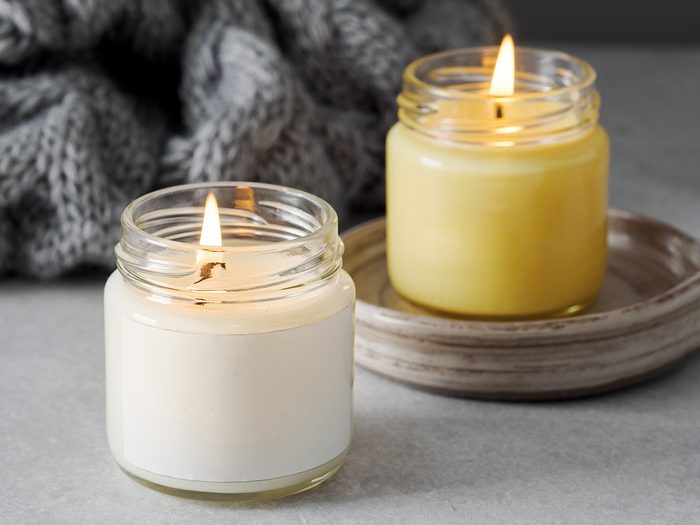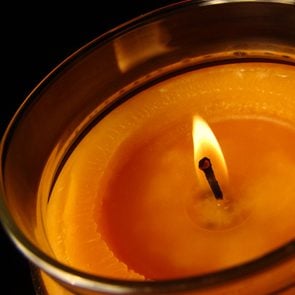Why You Should Always Trim Candle Wicks Before Lighting

...And more candle care tips for a cleaner, safer burn.
There’s nothing like the gentle glow of candlelight during the fall and winter seasons. (Bonus points if it’s giving off a fantastic fragrance!) But have you been taking the extra step to trim the candle wick before you light it?
Why Trim the Candle Wick?
Trimming the candle wick down to 1/4-in. can help you prevent problems like black flames, flames that are too tall, black smoke stains on glass candle holders and wax that’s burning too quickly.
The wick is the braided cotton that conveys (or “wicks”) the fuel—which is the wax—to the flame. If the wick is too tall, it could supply too much fuel to the flame too quickly, creating excess smoke and soot. A wick that’s the right height will create an even, steady burn so you can enjoy the glow and scent for hours. A trimmed wick also gives the flame a nice, even shape. A wick that’s too large will convey too much fuel (wax) to the fire, and the carbon buildup creates a black “mushroom cap” on the flame.
How to Trim a Candle Wick
A simple pair of scissors can trim any wick, including candles that are in containers, like glass jars or votives. But after a couple of uses, the wick can be hard to reach. One trick is to access the wick with toenail clippers. You can also use a pair of wick trimmers made specifically for hard-to-reach wicks.
What to Do if the Wick is Too Short?
If you’ve trimmed the wick too short for it to light, you can expose more wick by melting the surrounding wax with a wand lighter, then slowly pouring out the melted wax. Or use a butter knife to gently carve out the wax around the wick.
Other Candle Burning Tips
- Many candle manufacturers recommend burning candles for no longer than four hours at a time.
- Extinguish the candle when two inches or fewer of wax remains. This applies to tapers, pillars and candles in big glass jars, according to the National Candle Association.
- Tiny tea lights will burn for no more than four to six hours.
- Many candle makers recommend extinguishing flames with a snuffer or by dipping the wick into the wax pool, because blowing out the candle can create excess smoke.
- And of course, follow basic fire safety by never leaving a candle unattended.
- Freezing candles isn’t recommended because the wax might crack. Store candles at a moderate to cool temperature.
- Don’t buy candles with a wick with metal inside or twisted, instead of braided, fibres. These wicks burn quickly, which is why you often see them on birthday candles.
Now that you know why you should trim a candle wick, consult our healthy home checklist to eliminate potential hazards in every room.






